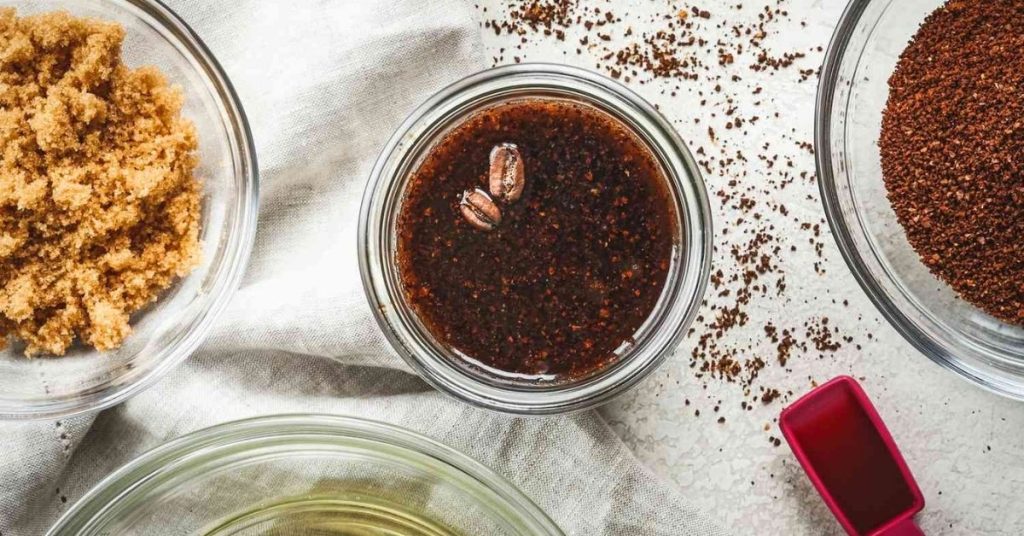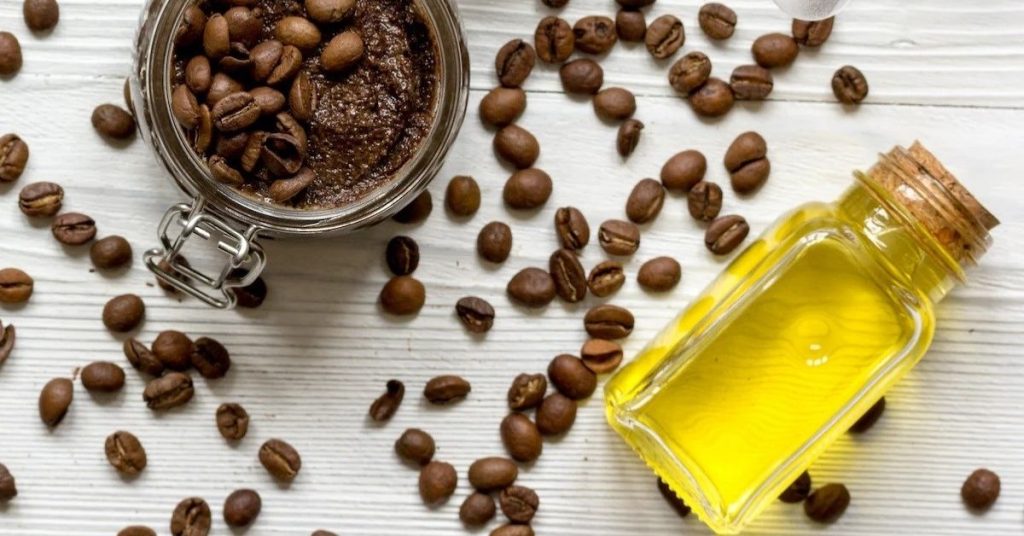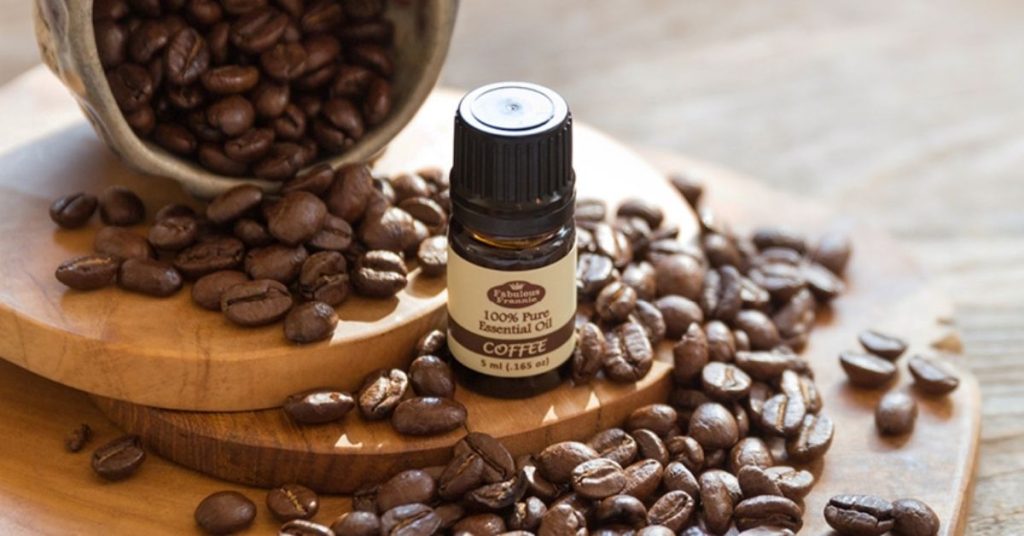How to Make Coffee Infused Oil: A Simple Guide
Coffee oil is a versatile ingredient that can be used in a variety of ways. It can be used in skincare products, added to baked goods, or used as a natural flavoring for coffee. Making your coffee oil is surprisingly easy and requires only a few ingredients. In this article, Aspect Coffee Works will provide you with a step-by-step guide on how to make coffee oil at home.
Contents
- 1 Understanding Coffee-Infused Oil
- 2 Types of Ground Coffee Beans to Make Coffee-Infused Oil
- 3 Benefits of Coffee Oil
- 4 Materials Needed to Make Coffee Essential Oil
- 5 How to Make Coffee Oil: Cold Infusion Method
- 6 Tips for Preserving Coffee Oil
- 7 Difference Between Cold Infused and Hot Infused Coffee Oil
- 8 Conclusion
Understanding Coffee-Infused Oil

As a coffee lover, I have always been fascinated by the many uses of coffee beyond just drinking it. One of the most interesting uses of coffee is making coffee-infused oil. Coffee-infused oil is a versatile ingredient that can be used in a variety of ways, from cooking to skincare. In this section, I will explain what coffee-infused oil is, how it is made, and some of its uses.
What is Coffee Infused Oil?
Coffee-infused oil is simply oil that has been infused with coffee. The oil can be any type of oil, such as olive oil or coconut oil. The coffee used to make the oil can be ground coffee beans or whole coffee beans. The coffee is steeped in the oil for some time, allowing the flavor and aroma of the coffee to infuse into the oil.
How is Coffee Infused Oil Made?
There are several methods for cooking coffee-infused oil, but the basic process involves steeping coffee in oil for a period of time. One method involves heating the caffeinated oil together in a double boiler for several hours, while another method involves steeping the coffee in cold oil for several days. The type of caffeinated oil employed, as well as the steeping time, can affect the final flavor and aroma of the oil.
Uses of Coffee-Infused Oil
Coffee-infused oil has a variety of uses. In cooking, it can be used to add a rich coffee flavor to dishes such as marinades, dressings, and sauces. In skincare, it can be used as a moisturizer or added to homemade scrubs and masks. It can also be used as a massage oil or added to bathwater for a relaxing soak.
Overall, coffee-infused oil is a versatile ingredient that is easy to make and has many uses. Whether you are a coffee lover looking for new ways to enjoy your favorite beverage or someone interested in natural skincare and beauty, coffee-infused oil is worth trying out.
Types of Ground Coffee Beans to Make Coffee-Infused Oil

When it comes to coffee-infused oil, the type of beans you use can greatly affect the final product. Here are some of the most common types of beans:
Arabica Beans
Arabica beans are the most widely used beans due to their mild and sweet flavor. They are also low in acidity, which makes them a great choice for those with sensitive stomachs. Arabica beans are grown in high altitudes and are typically more expensive than other types of beans.
Robusta Beans
Robusta beans are a popular choice due to their strong and bitter flavor. They are also high in caffeine, which makes them a great choice for those who need a quick energy boost. Robusta beans are typically grown in low altitudes and are less expensive than Arabica beans.
Liberica Beans
Liberica beans are a lesser-known coffee bean variety that is gaining popularity among coffee enthusiasts. They have a unique, fruity flavor and are known for their large size. Liberica beans are typically grown in Southeast Asia and are more expensive than Robusta beans.
When choosing which type of beans to use for making oil, it’s important to consider the flavor profile you want to achieve. Arabica beans are a great choice for those who prefer a mild and sweet flavor, while Robusta beans are better suited for those who prefer a strong and bitter taste. Liberica beans are a great option for those who want to experiment with a unique and fruity flavor.
Benefits of Coffee Oil

Coffee bean oil is a natural oil that is extracted from coffee beans. It is rich in antioxidants, caffeine, and essential fatty acids, which makes it a great addition to your skincare, hair care, and aromatherapy routines.
Skin Care
This oil has many benefits for your skin. It helps to reduce inflammation, redness, puffiness, and vitamin E making it an excellent ingredient for anti-aging products. The antioxidants in oil help to protect your skin from free radicals, which can cause premature aging. It also helps to improve circulation, which can give your skin a healthy glow.
Hair Care
Coffee oil is also great for your hair. It helps to stimulate hair growth by improving blood circulation to the scalp. It also helps to strengthen hair follicles, which can reduce hair loss. The essential fatty acids help to moisturize and nourish your hair, making it softer and more manageable.
Aromatherapy
Coffee oil has a rich, warm, and invigorating aroma that can help to boost your mood and energy levels. It is also a great natural alternative to synthetic fragrances, which can be harmful to your health. You can use oil in a diffuser, or add a few drops to your bath or shower for a relaxing and energizing experience.
In summary, coffee bean oil is a versatile and beneficial natural oil that can be used in a variety of ways. Whether you’re looking to improve your skin, hair, lip balm, or mood, this oil is a great choice.
Materials Needed to Make Coffee Essential Oil

To cook coffee essential oil, you will need a few materials. Here are the materials that you will need:
Coffee Beans
The first material that you will need is coffee beans. You can use any type of coffee beans that you prefer, but it is recommended that you use freshly roasted beans. Freshly roasted beans will have a stronger aroma and flavor, which will result in a more potent coffee essential oil.
Carrier Oil
The second material that you will need is a base oil. Carrier oils are used to dilute essential oils so that they can be safely applied to the skin. Some common base oils that you can use include olive oil, coconut oil, and jojoba oil.
Glass Jar
The third material that you will need for coffee essential oil is a mason jar. You will need a glass vessel to store the coffee essential oil as it is being made. It is recommended that you use a dark-colored glass jar to protect the oil from light and heat.
Cheesecloth
The fourth material is cheesecloth. Filter cloth is used to strain the coffee essential oil from the coffee beans. It is recommended that you use a fine-mesh cheesecloth to ensure that all of the coffee particles are removed from the oil.
Overall, these are the materials that you will need for coffee essential oil. By using these materials, you can make a high-quality coffee essential oil that is perfect for use in a variety of different applications.
How to Make Coffee Oil: Cold Infusion Method

Coffee bean oil is a versatile and flavorful ingredient that can be used in a variety of dishes. Cooking coffee bean oil is a simple process that involves infusing beans in a base oil. In this section, I will provide directions using the cold brew infusion method.
Bean Selection and Preparation
You will need to select high-quality coffee beans. Choose beans that have a rich, full-bodied flavor and aroma. It is recommended to use freshly roasted beans for the best flavor.
Once you have selected your beans, grind them to a medium-coarse consistency. This will help to ensure that the coffee flavor is evenly distributed throughout the oil.
Oil Infusion
To cook coffee bean oil employing the cold brew infusion method, you will need a clean jar with a tight-fitting lid, a base oil such as olive oil or jojoba oil, and your coffee grounds.
First, add your ground beans to the jar. Next, pour the base oil over the beans, making sure that they are completely covered. Seal the jar tightly and shake it gently to mix the ingredients.
Place the jar in a cool, dark place and let it sit for at least two weeks. During this time, the coffee flavor will infuse into the oil.
Straining the Mixture
After two weeks, it is time to strain the oil mixture. Place a filter cloth or fine-mesh strainer over a clean bowl or jar. Pour the oil mixture through the strainer, allowing the oil to drip through into the bowl or jar.
Once you have strained the mixture, discard the coffee grounds and filter cloth. Store the oil in a clean, airtight container in a cool, dark place. The oil will keep for up to six months.
Coffee bean oil employing the cold method is a simple process that requires only a few ingredients and a little patience. The resulting oil is a flavorful and versatile ingredient that can be used in a variety of dishes, from salad dressings to marinades.
Tips for Preserving Coffee Oil

Once you have successfully made your oil, it is important to store it properly to ensure its longevity and quality. Here are some tips for storing:
- Use a dark, airtight container: It should be stored in a dark, airtight container to prevent oxidation and light exposure. This will help maintain the quality and aroma of the oil. Glass containers are preferred over plastic as they are less likely to be affected by temperature changes.
- Store in a cool, dry place: It is important to store oil in a cool, dry place away from direct sunlight. Heat and humidity can negatively affect the quality of the oil and cause it to spoil faster.
- Label the container: Labeling the container with the date of production and the type of oil utilized can help you keep track of the freshness of the oil. This will also help you identify the oil easily when you have multiple oils in storage.
- Shake the container before use: Coffee bean oil can separate over time, so it is important to shake the container before use to ensure the oil is well-mixed.
By following these simple tips, you can ensure that your homemade coffee bean oil stays fresh and flavorful for a longer period.
Difference Between Cold Infused and Hot Infused Coffee Oil

As the name suggests, the difference between cold-extracted and hot-infused coffee bean oil is the temperature at which the coffee beans are infused with the base oil. In this section, I will explain the difference between these two methods and the benefits of each.
Hot Infused Coffee Oil
Hot-infused caffeine oil is made by heating the carrier oil and coffee beans together. This method is quicker and takes only a few hours to make. The heat helps to extract the coffee’s essential oils, which gives the oil a stronger coffee aroma and flavor. However, the heat can also destroy some of the oil’s beneficial compounds, such as antioxidants.
To make hot-infused oil, you will need a slow cooker or a double boiler. Add the carrier caffeinated oil beans to the slow cooker or double boiler and heat it on low heat for 6-8 hours. Make sure to stir the mixture every hour to ensure an even infusion. Once the infusion is complete, strain the oil using a cheesecloth or a coffee filter.
Cold Infused Coffee Oil
Cold-extracted coffee oil is made by infusing the base oil with coffee beans at room temperature. This method takes longer, usually 4-6 weeks, but it preserves more of the oil’s beneficial compounds, such as antioxidants. The oil has a milder coffee aroma and flavor compared to hot-infused oil.
To make cold extracted oil, you will need a jar with a tight-fitting lid, a base oil of your choice, and coffee beans. Add the carrier caffeinated oil beans to the jar and stir to combine. Close the jar tightly and store it in a dark, cool place for 4-6 weeks. Stir the mixture every few days to ensure an even infusion. Once the infusion is complete, stress the oil using a filter cloth or a coffee filter.
In conclusion, both hot-infused and cold-extracted oils have their benefits. Hot-infused oil has a stronger coffee aroma and flavor, while cold-extracted oil preserves more of the oil’s beneficial compounds. Choose the method that suits your needs and preferences.
Conclusion
In conclusion, cooking coffee bean oil is a simple and rewarding process that can be done in the comfort of your own home. By following the steps outlined in this article, you can create your homemade coffee oil that can be used for a variety of purposes.
Some of the benefits of using coffee bean oil include improved concentration and focus, energy levels, and skin and hair health. It is important to note that this oil should not be ingested and should only be used externally, not like cream which you can eat.
When employing a coffee oil recipe, it is important to choose high-quality coffee beans and carrier oils. Experiment with different combinations to find the perfect blend for your needs. You can also add essential oils to your coffee bean oil for added benefits and a pleasant aroma.
Finally, store your oil in a cool, dry place away from direct sunlight. With proper storage, your oil can last for up to six months. Enjoy the benefits of this versatile and aromatic oil in your daily routine.







